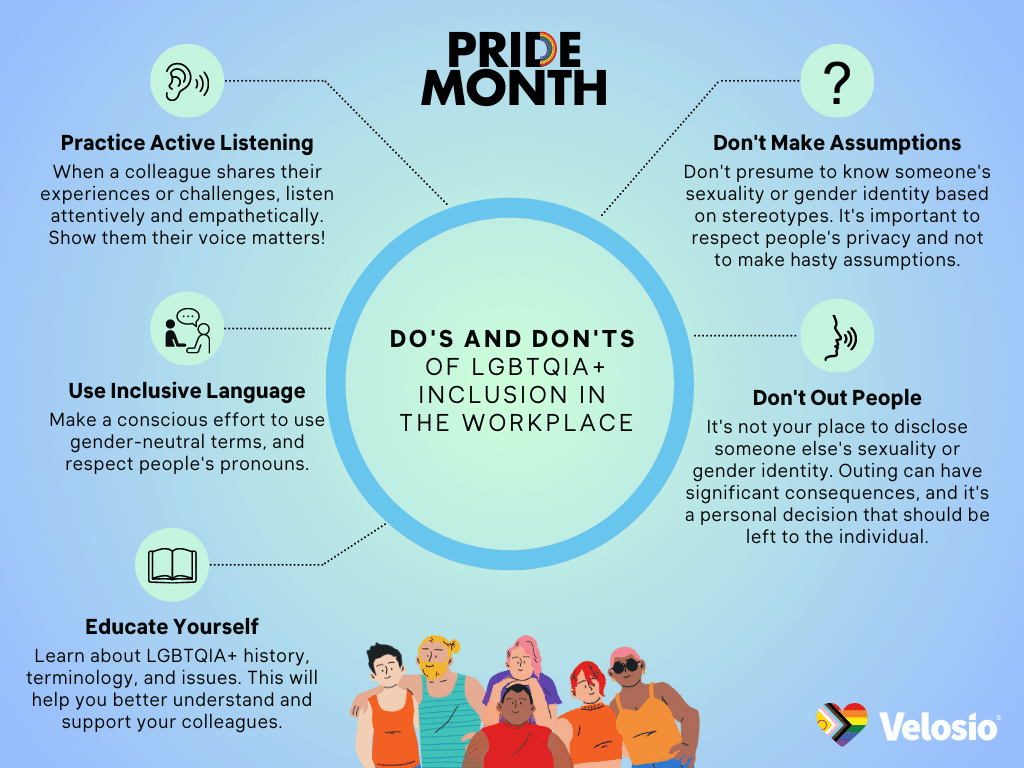Allyship in Action: Supporting LGBTQIA+ Colleagues in the Workplace
Becoming a LGBTQIA+ ally results in a workplace that is welcoming, supportive, and diverse, inevitably leading to innovative and inclusive outputs.
Table of Content
In the push for diversity and inclusion in the workplace, allyship plays a vital role. Allies to the LGBTQIA+ community can help shape a corporate culture that’s welcoming, supportive, and nurturing for everyone. However, understanding how to support and advocate for LGBTQIA+ colleagues involves knowledge, sensitivity, and a willingness to learn.
As we mark Pride Month, let’s delve into how allies can navigate these sensitive dynamics in the workplace.
An ally is a person who actively supports the rights and well-being of marginalized groups to which they do not personally belong. As an ally, you can be instrumental in establishing a supportive work environment for LGBTQIA+ colleagues.

Here are some guidelines to keep in mind when interacting with colleagues who may identify as LGBTQIA+:
Initiating discussions around LGBTQIA+ topics can be tricky. The aim is to encourage open dialogue without unintentionally outing someone or saying something inappropriate. Here are a few tips:
Being an ally isn’t about being perfect—it’s about being willing to learn and grow. Missteps will happen, but it’s how we learn from these experiences that truly matters. Remember, it’s essential to apologize sincerely if you make a mistake and use it as a learning opportunity.
Becoming a LGBTQIA+ ally is a continuous process of learning, understanding, and advocating. It requires time and effort, but the result is well worth it—a workplace that is welcoming, supportive, and diverse, leading to innovative and inclusive outputs. As we celebrate Pride Month, let’s make a commitment to foster such a culture in our workplaces, not just this month, but every day of the year.
Talk to us about how Velosio can help you realize business value faster with end-to-end solutions and cloud services.